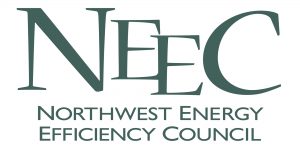In trying to balance their desire to save energy and tight capital budgets, many commercial and industrial facilities are turning to Retrocommissioning (RCx). RCx focuses on operational changes and very low cost component replacements to increase the operating efficiency of existing equipment without the need for capital budget requests. Increasingly, customers as well as incentive programs are recognizing the value in RCx as a low cost and practical energy efficiency resource.
Energy 350 has worked with dozens of commercial and industrial customers throughout the northwest to optimize the energy performance of existing equipment. The results can be staggering. They have seen savings ranging from $5,000 per year to upwards of $100,000. But, most importantly implementation costs are minimal and often no more than a service visit from a contractor with guidance from a RCx engineer. Typical measures may range from basic setpoint changes in a controls system to more in depth but low cost upgrades such as control programming changes, sensor & valve repair or calibration and economizer replacements.
The measures may seem glaring in hind sight, but typically RCx measures go unnoticed. Often the inefficiencies don’t lead to space comfort issues or occupant complaints. Below are some examples of common measures. These tend to have payback periods of less than a year, and frequently a matter of days.
Time clocks with no pins – Modern HVAC systems utilize a computer to schedule equipment. However, a substantial number of buildings are still utilizing these time clocks to control operating hours on equipment. Without pins in the timeclock, this equipment will run nights and weekends regardless of occupancy schedule. The timeclock shown is missing pins which normally would be present around the perimeter of the ring.
Failed Economizers – Economizers allow HVAC systems to utilize outside air in cooler weather rather than air conditioning. Unattended economizers can fail, resulting in expensive year round energy costs. Often the solution is as simple as some basic linkage repairs and recalibration.
Leaking Chilled and Hot Water Valves – Control valves are one of the most critical elements within an HVAC system. Valves ensure that the control system has the capability to determine when and how chilled water, hot water or steam influences the air temperature. When valves don’t operate as intended or don’t fully seat, the deficiencies are extremely costly and typically go unnoticed. If a hot water valve leaks, the chilled water valve will simply open to counter the heat gain and comfort is maintained. Although comfort may be maintained, it comes at a huge energy penalty. In this case, even though the hot water valve is commanded to 0% open, the air is being unintentionally heated from 68°F to 98°F by a leaking valve, then must be cooled down with chilled water to 68°F.
Control Parameter Resets – Modern digital control systems have the capability to reset any number of parameters to always optimize energy performance based on varying weather conditions, occupancy, etc. The algorithms that are utilized to determine these parameters are vital to energy efficiency. Often small tuning or adjustments to control algorithms can make or break energy efficiency. During the RCx process an engineer reviews algorithms at various times of day and weather conditions to recommend tuning for better efficiency without compromising comfort.
Adjusting Equipment Operating Schedules – Energy geeks like us like complex solutions to complex problems, but nothing saves energy like shutting equipment off when it’s not needed.
Energy350 have proven the high value and low cost of RCx in dozens of commercial and industrial facilities throughout the northwest. Retrocommissioning is a highly technical approach to energy efficiency but amongst the most practical and cost effective energy efficiency resources remaining in the region.
